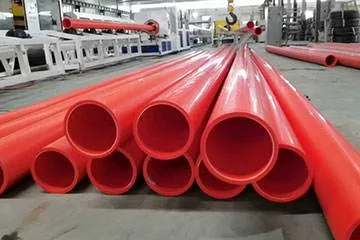Dec . 07, 2024 02:01 Back to list
hdpe compression fittings
Understanding HDPE Compression Fittings A Comprehensive Guide
High-Density Polyethylene (HDPE) compression fittings are essential components used in various plumbing and irrigation systems. These fittings are designed to connect HDPE pipes while ensuring a tight, leak-free seal. In this article, we will explore the characteristics, benefits, installation process, and applications of HDPE compression fittings.
What are HDPE Compression Fittings?
HDPE compression fittings are mechanical connectors made of robust plastic materials that allow for the easy coupling of HDPE pipes. They consist of several key components a body, a compression ring (also known as a ferrule), and a nut. When the nut is tightened, it compresses the ring, creating a strong, watertight seal around the pipe. This design allows for quick and reliable installations without the need for specialized tools or welding techniques, making them a popular choice in various industries.
Characteristics of HDPE Compression Fittings
1. Corrosion Resistance One of the most notable characteristics of HDPE compression fittings is their resistance to corrosion. Unlike metal fittings that can rust over time, HDPE is impervious to many chemicals and environmental factors, ensuring a longer lifespan.
2. Lightweight and Durable HDPE fittings are significantly lighter than their metal counterparts, making them easy to transport and install. Despite their lightweight nature, they maintain strength and durability, standing up to high pressures and various environmental conditions.
3. Versatility These fittings can be used in numerous applications, from agricultural irrigation systems to municipal water supply lines. Their versatility makes them ideal for projects requiring reliable and quick connections.
4. Ease of Installation HDPE compression fittings can be easily installed without the need for electrical tools, welding, or additional heat. This ease of installation significantly reduces labor costs and time, making them a preferred choice among contractors.
Benefits of Using HDPE Compression Fittings
1. Leak-Free Sealing The unique design of compression fittings ensures a robust seal when properly tightened. This leak-resistant feature is crucial in preventing water loss and maintaining system efficiency.
2. Compatibility HDPE compression fittings are compatible with various sizes of HDPE pipes. This compatibility allows for flexibility in system design and accommodation of different pipe sizes as needed.
3. Cost-Effectiveness The initial cost of HDPE fittings is typically lower than metal fittings, and their long lifespan leads to fewer replacements. The overall cost-effectiveness makes them a wise investment for long-term projects.
hdpe compression fittings

4. Eco-Friendly HDPE is a recyclable material, making HDPE compression fittings an environmentally friendly choice. Using these fittings can contribute to sustainable practices in construction and plumbing.
Installation Process
Installing HDPE compression fittings is straightforward and requires minimal tools. Here’s a concise breakdown of the steps involved
1. Cut the Pipe Use a pipe cutter to ensure a clean, straight cut on the HDPE pipe. Remove any burrs or sharp edges to facilitate a proper connection.
2. Slide on the Nut and Compression Ring Before inserting the pipe into the fitting, slide the compression nut and ring onto the pipe. Ensure that the ring is positioned correctly; it should be closer to the fitting.
3. Insert the Pipe Push the pipe all the way into the fitting body until it reaches the bottom. This ensures that the fitting will create a complete seal.
4. Tighten the Nut Carefully screw the compression nut onto the fitting body. Tighten it by hand first, and then use a wrench for additional tightening.
5. Check for Leaks Once the installation is complete, turn on the water supply and check for any signs of leaks. If any drips are observed, tighten the nut further.
Applications
HDPE compression fittings are widely utilized in various sectors, including
- Agriculture For irrigation systems that require efficient water delivery. - Municipal Water Supply Connecting water lines for distribution. - Industrial Used in chemical processing and water treatment facilities. - Residential Systems For plumbing applications in homes and buildings.
Conclusion
HDPE compression fittings offer an exceptional combination of durability, ease of installation, and resistance to environmental factors. Their versatility and cost-effectiveness make them an essential choice for anyone involved in plumbing and irrigation projects. Whether for residential use or large-scale industrial applications, understanding the benefits and proper installation techniques of HDPE compression fittings can lead to long-lasting and reliable systems.
-
High-Quality PVC Borehole Pipes Durable & Versatile Pipe Solutions
NewsJul.08,2025
-
High-Quality PVC Perforated Pipes for Efficient Drainage Leading Manufacturers & Factories
NewsJul.08,2025
-
High-Quality PVC Borehole Pipes Durable Pipe Solutions by Leading Manufacturer
NewsJul.08,2025
-
High-Quality PVC Borehole Pipes Reliable PVC Pipe Manufacturer Solutions
NewsJul.07,2025
-
High-Quality UPVC Drain Pipes Durable HDPE & Drain Pipe Solutions
NewsJul.07,2025
-
High-Quality Conduit Pipes & HDPE Conduit Fittings Manufacturer Reliable Factory Supply
NewsJul.06,2025

